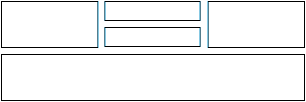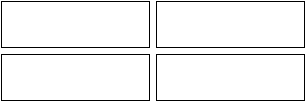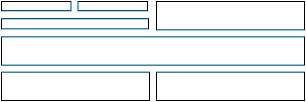| |
$panel_number = 0;
@panel_list = ();
# OK, scan for panels. Just to make the whole thing more baroque, I'm putting the recursive subroutine
# right in the middle of our script; more top-level processing goes on below this. Isn't that cool?
panel_scan ($cartoon);
sub panel_scan {
my $parent = shift;
my @panels = ();
foreach (xml_elements($parent)) {
next if $$_{name} ne 'panel';
push @panels, $_;
push @panel_list, $_;
}
return if (!@panels);
# Find actual row structure.
my @rowformat = split /-/, xml_attrval ($parent, 'rowformat');
my @actual = ($#panels + 1);
if (xml_attrval ($parent, 'rowformat')) {
my $rowoffset = 0;
my $actual_offset = 0;
$rowformat[$rowoffset] = 1 if !$rowformat[$rowoffset];
while ($actual[$actual_offset] > $rowformat[$rowoffset]) {
push @actual, $actual[$actual_offset] - $rowformat[$rowoffset];
$actual[$actual_offset] = $rowformat[$rowoffset];
$actual_offset++;
$rowoffset++;
$rowoffset = 0 if $rowoffset > $#rowformat;
$rowformat[$rowoffset] = 1 if !$rowformat[$rowoffset];
}
}
# Stash it for debugging and all-around baroqueness.
xml_set ($parent, 'actual-rowformat', join ('-', @actual));
# Now parcel out horizontal and vertical space based on the actual row structure.
my ($row_coord, $row_width, $col_coord, $col_width);
if (xml_attrval ($parent, 'rowdir') =~ /^v/) {
$row_coord = 'panel-x';
$row_width = 'panel-w';
$col_coord = 'panel-y';
$col_width = 'panel-h';
} else {
$row_coord = 'panel-y';
$row_width = 'panel-h';
$col_coord = 'panel-x';
$col_width = 'panel-w';
}
my $rowpos = xml_attrval ($parent, $row_coord) + xml_attrval ($parent, 'border');
my $rowtotal = xml_attrval ($parent, $row_width) - 2 * xml_attrval ($parent, 'border') - 1
- (xml_attrval ($parent, 'gutter') * (@actual - 1));
my $rowportion = $rowtotal / @actual;
my $row_len;
foreach $row_len (@actual) {
next if !$row_len;
my $colpos = xml_attrval ($parent, $col_coord) + xml_attrval ($parent, 'border');
my $coltotal = xml_attrval ($parent, $col_width) - 2 * xml_attrval ($parent, 'border') - 1
- (xml_attrval ($parent, 'gutter') * ($row_len - 1));
my $colportion = $coltotal / $row_len;
for (my $i=0; $i < $row_len; $i++) { # Step along the row...
$r = $rowpos;
$c = $colpos;
$rowpos =~ s/\..*//; # Integer portion only -- IM doesn't render lines well if they span pixel boundaries.
$colpos =~ s/\..*//;
$r -= $rowpos;
$c -= $colpos;
my $panel = shift @panels;
$rwidth = $rowportion + 1;
$cwidth = $colportion + 1;
$rwidth =~ s/\..*//;
$cwidth =~ s/\..*//;
if (xml_attrval ($parent, 'rowdir') eq 'horiz') {
$max = xml_attrval ($parent, $row_coord) + xml_attrval ($parent, $row_width);
if ($rowpos + $rwidth > $max) { $rwidth = $max - $rowpos; }
$max = xml_attrval ($parent, $col_coord) + xml_attrval ($parent, $col_width);
if ($colpos + $cwidth > $max) { $cwidth = $max - $colpos; }
}
xml_set ($panel, $row_coord, $rowpos);
xml_set ($panel, $col_coord, $colpos);
xml_set ($panel, $row_width, $rwidth);
xml_set ($panel, $col_width, $cwidth);
xml_set ($panel, 'linestyle', xml_attrval ($parent, 'linestyle')) if xml_attrval ($panel, 'linestyle') eq '';
$panel_number++;
if (xml_attrval ($panel, 'name') eq '') {
xml_set ($panel, 'name', "panel$panel_number");
}
if (!xml_attrval ($panel, 'rowdir')) {
if (xml_attrval ($parent, 'rowdir') =~ /^v/) {
xml_set ($panel, 'rowdir', 'horiz');
} else {
xml_set ($panel, 'rowdir', 'vert');
}
}
xml_set ($panel, 'gutter', xml_attrval ($parent, 'gutter')) if !xml_attrval ($panel, 'gutter');
my $panel_list_length = $#panel_list;
panel_scan ($panel);
if ($panel_list_length != $#panel_list) {
# Using a side effect is baroque, isn't it?
xml_set ($panel, 'linestyle', 'none');
}
$colpos += $c + $colportion + xml_attrval ($parent, 'gutter');
}
$rowpos += $r + $rowportion + xml_attrval ($parent, 'gutter');
}
}
|


